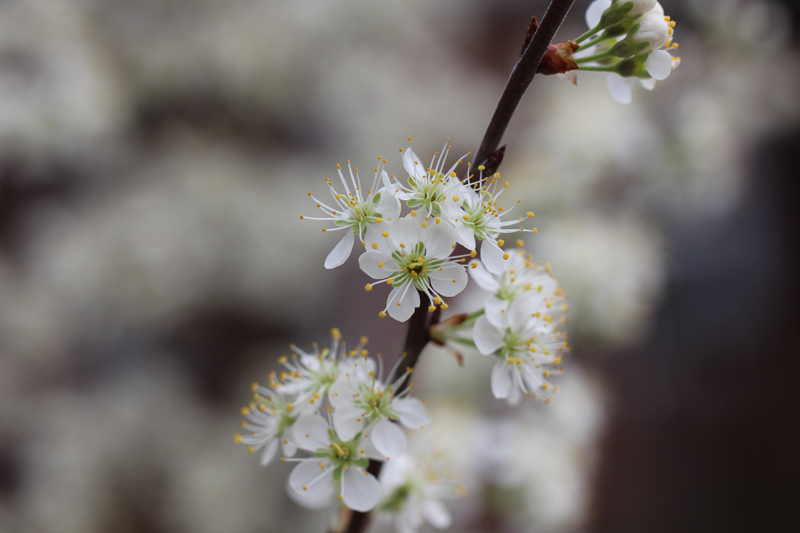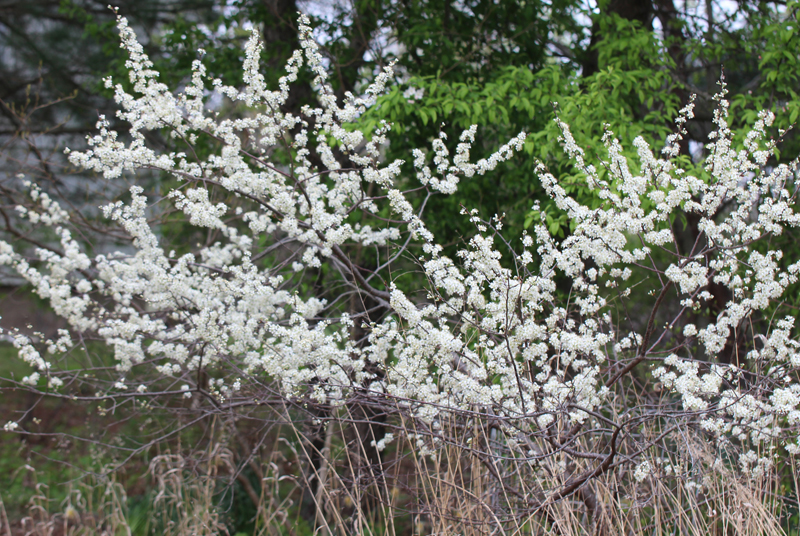
Beach Plum
Prunus maritima
Rosaceae


A multi-stemmed, low-growing shrub, the branches of beach plum are blanketed each spring (April - early June) with tons of showy white flowers before the leaves emerge. Once pollinated, the flowers take on a pinkish hue, and eventually turn to edible drupes the size of small plums or large grapes. Leaves are simple and tough. Tolerant of salt, sand, drought, poor and low-nutrient soils, and requires good drainage. The flowers create an important spring food source for many pollinators, especially various species of bee, including bumble bees, honey bees and solitary bees. Fruits are eaten by many species of wildlife, and the leaves may support many species of insect, which makes beach plum's value to wildlife (especially birds) even higher. Careful if planting near livestock pastures, as with most Prunus species, the leaves and pits contain hydrocyanic acid. Often found growing on the backs of dunes, and can be trained up into a single specimen tree, although it's rare to see it growing this way. Fruit production may vary in quantity by year, but this species is an excellent bloomer every spring when healthy, and the fruits make fantastic preserves.


3-18 foot tall
Plant Hardiness Zones: 5b-7a
Woody Shrub or Tree
Deer Resistant
Native Range: ME south to VA and west to PA. Rare in ME, PA, DE, and MD
Beach Plum 6-12 inch in a half gallon pot $20.25 (Temporarily Sold Out*)
Beach Plum 1-2 foot in a half gallon pot $22.25 (Temporarily Sold Out*)
*We normally carry this item but are temporarily sold out. We expect to have it available again as soon as our plants in production reach sufficient size/maturity or we harvest more seed. In some cases, plants may be recovering from caterpillar damage (Monarchs love our Milkweed), wind or hail damage, rampaging woodchucks, downed trees, or other natural issues. We are constantly updating our web site so please check back again.
Review or Finalize Your Order